#Foods rich in carotenoids
Explore tagged Tumblr posts
Text
The Best Foods for Your Eyes: Maintain Healthy Vision with a Nutritious Diet
Maintaining healthy vision is essential for a fulfilling and active lifestyle. The key to optimal eye health lies in nourishing your eyes with the right nutrients. In this article, we will explore the best foods for your eyes, focusing on how a nutritious diet can support and enhance your vision. By incorporating these foods into your daily routine, you can take proactive steps to ensure the…

View On WordPress
#Best foods for eye health#Carotenoids and eye protection#Diet for vision#Eye health#Foods rich in carotenoids#Foods rich in DHA#Nutrients for eye health#Nutrition and eyes#Omega-3 DHA and retina#Preventing eye diseases#Tips for healthy vision#Vision care
0 notes
Text
An apple a day does NOT keep the doctor away, I have carotenemia now
#i thought it was a marker stain for the longest time lmaooo#i eat a lot of foods rich in carotenoids in general but we recently got bags of apples home from 3 different ppl#so ive been eating like 1 or 2 apples a day plus putting apple in the food bc it gives it a little savoury undertone#so im like 90% sure the apples are the main culprit here#which is a shame bc now im gonna have to cut back on the apples (and the carrots too lets be real)#two of my faves 🥲💔#also fun fact im allergic to apples but idk if that has anything to do with this
0 notes
Note
How do you get your soup so beautiful ??
for egg drop specifically, the brand of eggs i source is known to fill their chickens diet with carotenoid-rich foods. so their yolks have a beautiful golden orange color. this doesn't actually impact taste really at all, but we also eat with our eyes so when you see a deep golden egg yolk and think it Looks better, it will probably taste better to you.
another tip is to let your beaten eggs soak with salt for like 10-15 minutes. this really darkens the color and actually impacts the texture positively too. though i'm not sure how much that applies to the stream-cooking method used for egg drop soup. but doing this for scrambled eggs or an omelet does a lot.
anyway yeah other than that it's a basic egg drop soup recipe. stock, white pepper, salt, cornstarch slurry. if you want an easy way to make it look better u can just throw some turmeric in there tho lol
48 notes
·
View notes
Text
Study on the storage stability of phycocyanin from Spirulina obtusususiae
Abstract: The effects of temperature, sunlight and different additives on the stability of aqueous solutions of phycocyanin were studied. It was concluded that phycocyanin should be stored at 40 ℃ and protected from light, and should be stored under neutral conditions; glucose, sodium chloride and sorbitol could effectively improve the stability of phycocyanin, and the pigment preservation rate of phycocyanin increased from 50.90% to 78.10%, 67.02% and 69.08% after 72 h at room temperature, respectively; the stabilizers of phycocyanin were compounded with glucose, sodium chloride and sorbitol in the mass ratio of 1 : 1 : 0.3 and left at 4 ℃ for 14 days. After adding glucose, sodium chloride and sorbitol as stabilizers in the mass ratio of 1:1:0.3, the pigment retention rate of the alginate was increased by 54.4% compared with that of the unadded alginate after being placed at 4 ℃ for 14 d. The pigment retention rate of the alginate added with the additive was increased by 16.1% compared with that of the unadded one after being placed at 25 ℃.

Spirulina (English name spirulina), also known as "spirulina", belongs to the family of Cyanobacteria, Chlamydomonas; at present, there are three types of large-scale cultivation at home and abroad, namely, Spirulina major, Spirulina obtususus and Spirulina indica. Spirulina obtususus is a blue-green seaweed (cyanobacteria) belonging to the Candida family.
It is a non-branched, multicellular spiral mycelium with a length of about 200 μm~300 μm and a width of about 5 μm~10 μm [1]. The amino acid composition of the proteins contained in Spirulina obtusususiformis is very uniform and reasonable, which suggests that it can be used as a potential health food for human beings [2].
Phycocyanin is one of the photosynthesizing proteins in the phycobilins, which are chromophore polypeptides consisting of α and β subunits with a molecular weight of about 20,000 daltons [3]. The phycobilisome in the cyanobacterium Spirulina obtususus is composed of an alpha and beta subunit in the center and a phycocyanin in the periphery. Phycocyanin is the most important bile protein in Spirulina, accounting for about 20 % of the dry weight [4-6]. It has a blue color in aqueous solution and fluoresces in purple. The UV-Vis spectra of phycocyanin in Spirulina obtusususiformis show characteristic absorption peaks at 278, 360 and 620 nm [7]. It has also been shown that the maximum absorption peak of L. obtususus is at 620 nm and its fluorescence emission peak at room temperature is at 645 nm [8].
Natural pigments are very rich in variety and are classified according to a variety of bases. According to solubility can be divided into fat-soluble pigments, water-soluble pigments; according to the source can be divided into animal pigments, microbial pigments and phytochromes; in order to classify the different chemical structures for anthocyanins, carotenoids and other five categories [9-10].
Alginin is a natural blue pigment with high application value. It has been shown to be anticancer[11-12] and can be used as a health food for patients with enteritis[13] . It is highly water-soluble and can be easily extracted from Spirulina. In the process of extraction and purification, the control of pH value and ionic strength is very crucial for the stability of algal blue protein. The discoloration and denaturation of phycocyanin is determined by the grade of protein polymers, and its polymer form is mainly affected by light intensity, light time, temperature, pH value, irradiation and protein concentration [14-17].
It has been studied that the higher concentration of sodium chloride can protect the stability of alginate, and the appropriate amount of sodium benzoate can protect the color and preservation of alginate to a certain extent [18-19], but the stability of alginate is still low. Therefore, on the basis of previous studies, this experiment was carried out to investigate the effects of different food-grade additives as well as glucose, sodium chloride and sorbitol additives on the stability of alginate.
1 Materials and Methods
1.1 Materials and Main Instruments
Spirulina obtususifolia powder: Inner Mongolia Wuxingzhao Ecological Industry Development Co.
FD-10 Freeze Dryer: Beijing DTY Technology Development Co., Ltd; 756PC UV Spectrophotometer: Tianjin Prius Instrument Co., Ltd; DK-98-II Electric Thermostatic Water Bath: Tianjin Taiste Instruments Co.
1.2 Extraction and purification of algal blue protein
1.2.1 Extraction of algal blue proteins[19]
Appropriate amount of spirulina powder was dissolved in distilled water according to the material-liquid ratio of 1:40 (mass ratio), and then stirred with a stirring rotor at a speed of 1,000 r/min for 1.5 h. It was frozen at -18 ℃, and then thawed rapidly in a 37 ℃ water bath for 24 h. After repeating this procedure for four times, it was centrifuged at a high speed for 10 min at 10,000 r/min, and the absorbance at 620 and 280 nm was measured after taking the supernatant and diluting it with appropriate multiplicity.
1.2.2 Purification of algal blue proteins[17]
Take the crude extract of algal blue protein with the concentration of 5 mg/mL, slowly add ammonium sulfate solid to the saturation degree of 40%, and at the same time, carry out magnetic stirring until complete dissolution, stand at 4 ℃ for 2 h, then centrifuged at 10 000 r/min for 15 min, collect the precipitate, dissolve it in an appropriate amount of distilled water, and then freeze-dried after dialysis and set aside.
1.3 Research on storage stability of algal blue protein
1.3.1 Effect of temperature on the stability of phycocyanin[19]
30 mg of alginate was dissolved in 30 mL of citrate phosphate buffer at pH 5.0, 6.0 and 7.0, and incubated in 6 temperature gradients (20, 30, 40, 50, 60 and 70 ℃) for 30 min. The absorbance was measured at 620 nm after appropriate dilution, and the pigment retention rate was calculated. The pigment retention rate was calculated according to equation (1):
Pigment retention rate/% = ×100 Equation (1)
1.3.2 Effect of daylight illumination on the stability of phycocyanin [19]
Two groups of 1 mg/mL aqueous phycocyanin solution were taken, one group was irradiated under a single light source (sunlight) and the other group was stored away from light, and then diluted appropriately after 12, 24, 36, 48, 60, and 72 hours, respectively, and the absorbance value was measured at 620 nm to compare the changes in the retention rate of phycocyanin pigments.
1.3.3 Effect of pH on the stability of algal blue protein
Take 0.1 g of alginate powder and dissolve it in 100 mL of citrate phosphate buffer with pH value of 5.0, 5.5, 6.0, 6.5 and 7.0 respectively, there are 5 groups in total, and take samples at 30 min intervals to dilute appropriately, and measure the absorbance value at the wavelength of 620 nm, and then compare the changes of the preservation rate of the alginate pigment.
1.3.4 Effect of food additives on the stability of algal cyanoproteins [20-21]
Take 100 mL of algal blue protein solution with a concentration of 1 mg/mL, and add the following additives in order according to the maximum additive amount of food additives stipulated in GB 2760-2011 Standard for the Use of Food Additives: glucose (5 g), sucrose (5 g), sodium chloride (5 g), sorbitol (0.003 g), sodium benzoate (0.000 2 g), ascorbic acid (0.002 g), and sodium benzoate (0.000 2 g), and the following additives are added to the solution. 0.002 g). After 24, 48 and 72 hours of exposure to sunlight at room temperature and appropriate dilution, the absorbance value at 620 nm was measured to compare the changes in the retention rate of phycocyanin pigments. The effects of different concentrations of glucose and sodium chloride on the stability of algal blue protein were measured according to the above method. Select appropriate concentrations of glucose, sodium chloride and sorbitol and add them into the aqueous solution of phaeocyanin, and carry out the test according to the above method to observe the change of pigment retention rate.
2 Results and analysis
2.1 Effect of temperature on the stability of phycocyanin
The effect of temperature on the stability of phycocyanin is shown in Fig. 1.
As can be seen from Fig. 1, the pigment retention rate of algal blue protein decreased with the increase of temperature when it was placed at different temperatures for 30 min. When the temperature was 20 ℃
The pigment retention rate of alginate stored at 40 ℃ was almost unchanged; the pigment retention rate of alginate stored at 50 ℃ and 60 ℃ decreased by 11.68% and 20.71%, respectively, compared with that of the initial one after 30 min, and the pigment retention rate of alginate stored at 70 ℃ showed the greatest decrease, which was 58.58% lower than that of the initial one.
High temperature will destroy the structure of algal blue protein and cause its denaturation, resulting in a decrease in the pigment retention rate of algal blue protein. It can be seen from the results that phycocyanin has the highest and most stable pigment retention rate between 20 ℃ and 40 ℃. Therefore, high temperature storage should be avoided below 40 ℃.
2.2 The effect of light on the stability of phycocyanin
The effect of sunlight illumination on the stability of phycocyanin is shown in Fig. 2.
As can be seen from Fig. 2, under the irradiation of room temperature and single sunlight source, the pigment retention rate of the algal blue protein solution decreased greatly from 48 h. At the same time, the color fading was obvious, and the color gradually changed from sapphire blue to light blue from 48 h, and became almost colorless and transparent at 60 h. The pigment retention rate decreased by 59.31% compared with that at 0 h, and the rate of the pigment retention rate was only 29.26% of the initial one at 72 h. The color retention rate of the solution decreased from 0 h to 60 h, and the color retention rate of the solution was only 29.26% of the original one at 72 h. After 72 h, the pigment retention rate was only 29.26%. The pigment retention rate of phycocyanin stored at room temperature under the condition of light protection was higher than that of sunlight, but the effect was not great, and the pigment retention rate of phycocyanin at 72 h was 13.51% higher than that of sunlight. It can be concluded that the sensitivity of phycocyanin to heat is greater than that to light, but light also has a certain effect on the pigment stability of phycocyanin. Therefore, phycocyanin should be stored under light-proof conditions.
2.3 Effect of pH value on the stability of algal blue protein
The effect of pH on the stability of phycocyanin is shown in Fig. 3.
Figure 3 shows that the pigment retention rate of phycocyanin solution at pH 5.0, 5.5, 6.0, 6.5 was small, and the pigment retention rate was kept in the range of 95.49%~102.19%; and it can be seen that the phycocyanin was the most stable and the highest pigment retention rate was found at pH 6.0. At pH 7.0, the pigment retention rate decreased greatly, from 100 % to 87.46 % gradually. This may be due to the fact that the alkaline condition damaged the structure of phycocyanin, so it should be preserved in neutral condition instead of alkaline condition.
2.4 Effect of additives on the stability of algal blue proteins
The effect of food additives on the stability of algal blue proteins is shown in Fig. 4.
Additive type
Fig. 4 Effect of food additives on the stability of algal blue proteins
Fig.4 The influence of food additives on stability of phycocyanin
Figure 4 shows that the retention rate of phycocyanin pigments in phycocyanin solutions with different additives increased and then decreased during 72 h of storage at room temperature under sunlight. This may be due to the incomplete dissolution of phycocyanin at the beginning. The highest pigment retention was observed in the alginate with glucose, sorbitol and ascorbic acid, which decreased from the initial 100 % to 78.10 %, 69.08 % and 67.24 %, respectively, which was significantly higher than that of the blank group (50.90 %). This may be attributed to the fact that the additives can protect the color of the algal blue protein and increase its pigment retention rate. However, the solution of phycocyanin with ascorbic acid produced a large amount of precipitation. Therefore, glucose, sodium chloride and sorbitol were selected for further study.
2.5 Effect of glucose concentration on the stability of algal blue proteins
The effect of glucose concentration on the stability of phycocyanin is shown in Fig. 5.
As shown in Fig. 5, the color retention rate of glucose-added phaeocyanin increased after 24 h, and then decreased with time. This may be due to the color protection effect of glucose on phycocyanin. The pigment retention rate of the alginate without glucose did not change much after 24 h at room temperature. When the concentration of glucose was 10 mg/mL, the absorbance value of phycocyanin increased greatly after 24 h, and the pigment retention rate of phycocyanin increased by 16.15%, which was 12.62% higher than that of phycocyanin without added glucose; the pigment retention rate of phycocyanin with added glucose at 10 mg/mL reached 78.09%, which was 27.19% higher than that of phycocyanin without glucose. After 72 h, the color retention rate of the solution with 10 mg/mL glucose reached 78.09%, which was 27.19% higher than that of the solution without glucose, and then the retention rate of alginate color tended to slow down as the concentration of glucose solution increased. Therefore, for the purpose of cost saving, 10 mg/mL of glucose was chosen for the next study.
2.6 Effect of sodium chloride concentration on the stability of algal blue proteins
The effect of NaCl concentration on the stability of algal blue protein is shown in Fig. 6.
Fig. 6 Effect of sodium chloride concentration on the stability of algal blue protein
As can be seen from Fig. 6, the pigment retention rate of the alginate without NaCl remained almost unchanged after 24 h, while the absorbance values of the alginate with NaCl increased, which was attributed to the protective effect of NaCl on the color of the alginate to inhibit the denaturation of the alginate. The color retention rate of the solution with 10 mg/mL NaCl was significantly higher than that of the blank group after 72 h, reaching 75.90%, and then leveled off. Therefore, in order to save the cost of the experiment, 10 mg/mL NaCl was chosen for the next study.
2.7 Effects of sorbitol, sodium chloride and glucose on the stability of phycocyanin
The effects of sorbitol, NaCl and glucose on the stability of phycocyanin are shown in Figure 7.
Figure 7 shows the complex color protection effect of the three additives on phycocyanin. The pigment retention rate of the alginate solutions increased to different degrees after 24 h at room temperature under sunlight, which was attributed to the color protection effect of the additives. In the blank group, the pigment content of the alginate solution remained almost unchanged after 24 h, and then decreased rapidly; the absorbance value of the alginate solution with the addition of sorbitol, dextrose and sodium chloride increased the most obviously, which was 41.29% higher than that at 0 h, and 38.38% higher than that of the alginate solution without the addition of the additives; and the color preservation was 23.01% higher than that of the blank group at 72 h. The effect of color preservation was very obvious. After 72 h, the color preservation rate was higher than that of the blank control group by 23.01%, and the color preservation effect was obvious. The stability of sorbitol-added phycocyanin was second, and its pigment preservation rate was 19.09% higher than that of the blank control group after 72 h at room temperature under sunlight. This is due to the compound effect of sorbitol, glucose and sodium chloride on alginate to play a good role in color protection and preservation, which is better than several other combinations of additives. Therefore, sorbitol, dextrose and sodium chloride can be added as compound stabilizers in alginate at a mass ratio of 1 : 1 : 0.3.
2.8 Effect of three additives on the stability of algal blue proteins
The initial pictures of phycocyanin (without additive) and phycocyanin (with additive) at (4±5)°C and (25±5)°C are shown in Fig. 8, and the pictures of phycocyanin (without additive) and phycocyanin (with additive) at (4±5)°C and (25±5)°C after 14 d are shown in Fig. 9, and the effects of three additives on the stability of phycocyanin are shown in Fig. 10.
Figures 8, 9 and 10 show the changes in pigment content of phycocyanin after the addition of glucose, sodium chloride and sorbitol as stabilizers for 14 d. The pigment retention rate of phycocyanin solutions decreased with the increase of storage days and varied under different conditions. The pigment retention of phycocyanin solutions decreased with the increase of storage days, and the pigment retention varied under different storage conditions. The most suitable storage condition for phycocyanin solution was 4 ℃ with preservative, and its pigment retention rate only decreased by 30.21% after 14 d of storage, which was 54.5% higher than that of phycocyanin stored at 4 ℃ without additive. However, the pigment retention rate of the unadditive alginate solution was almost zero after 14 d of storage at 25 ℃, with almost total loss of phycocyanin, and the pigment retention rate of the additive solution was 16.1% higher than that of the unadditive one. The pigment retention rate of the additive solution was significantly higher than that of the unadditive one at 25 ℃ and 4 ℃, which was attributed to the excellent color protection and anticorrosive effect of the three additives on the phycocyanin. This is due to the fact that the combination of the three additives has a good effect on the color protection and preservation of phycocyanin. Therefore, alginate is suitable for storage at low temperature with additives.
3 Conclusion
Differences in temperature, sunlight and pH all affect the storage stability of phycocyanin, with temperature having the most pronounced effect on the stability of phycocyanin and sunlight having a lesser effect on the stability of phycocyanin.
Appropriate concentrations of sorbitol, dextrose and sodium chloride can obviously protect the color of alginate and preserve it, and do not affect its properties. In this experiment, the three additives were added into the aqueous solution of phycocyanin, and it was found that they had obvious improvement effects on the storage stability of phycocyanin pigments. The compound additives added to phycocyanin can be widely used in food, cosmetics and other fields, and has high application value.
References:
[1] Hedenskog G, Hofsten A V. The Ultrastructure of Spirulina platensis -A New Source of Microbial Protein[J].Physiologia Plantarum, 1970, 23(1):209- 216
[2] Belay A, Ota Y, Miyakawa K, et al. Current knowledge on potential health benefits of Spirulina[J]. Journal of Applied Phycology, 1993, 5(2):235-241
[3] Serena Benedetti, Sara Rinalducci, Francesca Benvenuti, et al. Pu - rification and characterization of phycocyanin from the blue-green alga Aphanizomenon flos-aquae [J]. Journal of Chromatography B, 2006, 833(1):12-8
[4] Jaouen P, Lépine B, Rossignol N, et al. Clarification and concentra- tion with membrane technology of a phycocyanin solution extracted from Spirulina platensis[J]. Biochemical Society Transactions, 1999, 13(12):877-881
[5] Cohen Z. Spirulina platensis (Arthrospira), Physiology, Cell-Biology and Biotechnology [J]. Quarterly Review of Biology, 1997 (3):353 - 354
[6] Jespersen L, Stromdahl L D, Olsen K, et al. Heat and light stability of three natural blue colorants for use in confectionery and bever- ages[J]. European Food Research & Technology, 2005, 220 (3/4): 261-266
[7] Yin Gang, Li Chen. Separation and purification of algal bile proteins and polysaccharides from Spirulina and product characterization [J]. Fine Chemical Industry, 1999, 16(2):10-13
[8] PENG Weimin, SHANG Shutian, FU Youlan, et al. Studies on the nature of bile protein in Spirulina obtususus[J]. Journal of China Agricultural University, 1999, 4(C00):35-38
[9] Hui Qiusha. Research overview of natural pigments[J]. Northern Pharmacology, 2011, 8(5):3-4
[10] GUO Fenghua,WANG Hui . Research on the extraction and application of natural pigments[J]. Shandong Food Fermentation , 2007, 36(4):36-38
[11] Ch R,González R,Ledón N,et al. C-phycocyanin: a biliprotein with antioxidant, anti-inflammatory and neuroprotective effects[J]. Cur- rent Protein & Peptide Science, 2003, 4(3):207-216
[12] Eriksen N T. Production of phycocyanin--a pigment with applica - tions in biology, biotechnology, foods and medicine[J]. Applied Mi- crobiology & Biotechnology, 2008, 80(1):1-14
[13] Fretland D J, Djuric S W, Gaginella T S. Eicosanoids and inflamma DOI: 10.3969/j.issn.1005-6521.2017.12.008
#phycocyanin #Spirulinaobtusususiae #phycocyaninpowder
9 notes
·
View notes
Text


carotenoids rich foods i lovvve u 💋
3 notes
·
View notes
Text
En quoi manger des œufs le matin est une idée judicieuse. Nourrissant, pas cher, et plutôt savoureux s’il est bien préparé, l’œuf est un aliment que l’on ne doit pas oublier. Et en consommer au petit déjeuner peut être une excellente idée ! Il vous permettra de démarrer la journée avec le plein d’énergie mais sera également très utile pour contrôler votre poids ou pour améliorer vôtre santé riche en vitamines et en minéraux. Il contient des vitamines A et D, de la vitamine E et de la vitamine K. De plus, il est riche en iode et en sélenium (un antioxydant intéressant), mais également en phosphore ou en fer. Enfin, il contient de nombreux caroténoïdes, très bénéfiques notamment pour notre vision. Un condensé de bienfaits pour l’organisme dans un si petit aliment, c’est idéal de manger des œufs le matin il peut vous permettre de perdre du poids. En effet, l’œuf est un aliment faible en calorie 80 Kcal il permet de tenir plus longtemps entre chaque repas. Fini le grignotage, vous pourrez suivre un régime plus facilement sans ressentir les effets de la faim. Utiliser un coupe faim est une des règles d’or pour ne pas perdre la motivation lors d’une cure amincissante
The egg is very rich in vitamins and minerals. It contains vitamins A and D, vitamin E and vitamin K. In addition, it is rich in iodine and selenium (an interesting antioxidant), but also in phosphorus or iron. Finally, it contains many carotenoids, very beneficial in particular for our vision. A summary of benefits for the body in such a small food, it's ideal!
11 notes
·
View notes
Text
Foods that Reduce the Risk of Breast Cancer

There are many fruits and vegetables that contain antioxidants, which combat cancer cells in your body and reduce the risk of breast cancer. Apart from non-melanoma skin cancer, breast cancer is the most common cancer in women of all races. It has a lifetime risk of 1 in 26 in South Africa, according to the 2022 National Cancer Registry (NCR).
Foods such as leafy green vegetables, cruciferous vegetables, citrus fruits, fatty fish, and beans are all made up of compounds. Compounds that exhibit qualities that reduce the risk of breast cancer. We will list specific foods from the categories above that have been proven to reduce the risk of breast cancer. While referencing both completed research and ongoing research.
Vegetables That Fight Cancer:
Leafy green vegetables such as kale, arugula, spinach, mustard greens, and chard contain carotenoid antioxidants, including beta-carotene, lutein, and zeaxanthin. These antioxidants have been researched and have concluded that they are linked to an 18–28% reduced risk of breast cancer. Cruciferous vegetables such as cauliflower, cabbage, and broccoli contain glucosinolate compounds. These help your body to convert the nutrients into molecules called isothiocyanates that combat cancer cells.
Fruits That Prevent Cancer:
Citrus fruits and their peels are filled with all the good compounds that may protect against breast cancer. These include folate, vitamin C, beta-cryptoxanthin and beta-carotene, flavonoid antioxidants, hesperetin, and naringenin. These are all antioxidants, anticancer, and anti-inflammatory effects, ultimately reducing breast cancer risk by 10%. Fruits and berries protect against cellular damage and the development and spread of cancer cells. In 2013 it was discovered that women who consumed at least two servings of peaches each week had up to a 41% reduced risk of developing estrogen receptor-negative breast cancer.
The Good Protein:
Protein is a challenging topic to link to reducing the risk of any cancer due to the amount of processed meats in the everyday store, however, there are proteins that have contributed to reducing the risk of breast cancer. Fatty fish, including salmon, sardines, and mackerel, are known for their impressive health benefits such as omega-3, selenium and antioxidants. Researchers found that those with the highest intake of seafood sources of omega-3s had up to a 14% reduced risk of breast cancer. Beans are loaded with fibre, vitamins, and minerals that were found to reduce the risk of breast cancer by up to 20%.
Intaking your antioxidants:
Not everyone has time to manage their antioxidant intake or manage their eating habits at all. We have the solution; The DNA Slow Juicer for your leafy greens and the DNA Cold Flow Juicer. These appliances are capable of quick, high-nutrient-packed juice for you to consume from the comfort of your own home. Just simply pack your prepared ingredients of choice into the hopper and relax while it does all the work. Unsure about recipes for juicing? We have a blog post dedicated to different recipes for cancer prevention.
Closing food for thought:
Following a nutritious diet rich in foods like leafy greens, citrus fruits, and fatty fish may help reduce breast cancer risk. It may be equally important to limit or avoid items like alcohol, highly processed meats, and sugary foods and beverages.
Keep in mind that regular medical appointments and breast cancer screenings are critical for early detection and diagnosis. Early detection can lead to effective treatment and a positive prognosis. When breast cancer is detected at an early stage, about 90% of patients survive for many years after diagnosis.
2 notes
·
View notes
Note
Hi, I saw you gifted some random animal facts to Jes and wanted to ask if there are any left for me? 🥺🥺
And I would absolutely love to go to the Zoo with someone sharing animal facts with me (not the snake part though, I don’t like snakes very much….)
Me and a group of people booked a special trip to a Zoo where a biologist would tell us facts about animals and we got to ask very specific questions. (Like: why do the put the Eukalyptus branches for the Koalas in vases on artificial trees? Because apparently Koalas are a bit dumb and won’t recognize them as food when they just lie on the ground.)
That was so cool 😃
Hello!! I absolutely have more animal facts, I always have animal facts :)
That’s so cool!! I love walking around my local zoo and pointing out cool things about the animals to people who seem interested, it's a whole lot of fun :3
giant amazonian centipedes can snatch bats right out of the air!m
flamingos get their iconic pink color from their carotenoid rich diet!
swell sharks are biofluorescent!! they absorb blue light and re-emit it as green light!! it’s not visible to the human eye and was only recently discovered!!
coyotes and badgers have been documented hunting together!!! they're more successful when they work together too :)
green sea turtles are the only primarily herbivorous species of marine turtle!
dodos weren’t dumb they just evolved in an environment that didn’t have any natural predators and didn’t know that they were supposed to fear us :(
contrary to popular belief soft tissues like fur and feathers do fossilize (it’s just very rare)!! by studying the shape of the preserved melanosomes scientists can tell what color some dinosaurs and other prehistoric wildlife were!!!
(this one isn't animals but) mycelium fungi transfers nutrients between itself and individual trees, and will even connect trees to each other and create something called a mycorrhizal network!! trees will give nutrients to other trees!!! and they favor the ones more related to them!!!
#thanks for the ask!!#fun facts with emmie#I'm absolutely okay with this becoming a regular thing lol#I love sharing fun facts it's my favorite part of my job :3#well that and the Animals lol#asks
6 notes
·
View notes
Text
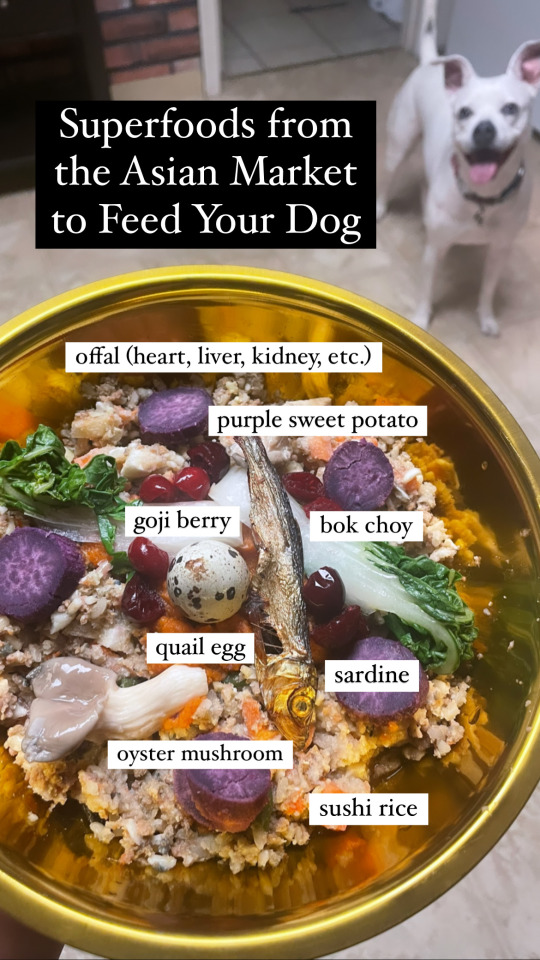
These past few years, I have become a huge advocate for feeding fresh food to dogs to enhance their lives. However, you don't exactly have to transition your dog to a 100% fresh food diet in order to gain the benefits of fresh food.
Simply adding fresh food to your dog's kibble can go a long way in improving their nutrition and overall health. For instance, one study done a group of dogs in 2005 revealed that feeding vegetables just three times a week had significantly lowered their risk of developing cancer, compared to dogs who were only fed kibble.
Asian markets, in particular, have some very beneficial fresh food items that aren't typically found at your local grocery store. These food items, however, are not intended to fully replace your dog's food. Remember - too much of something good can be bad for you.
Instead, they should be offered in moderation as treats, or just small amounts topped over an already complete and balance meal. As a general rule of thumb, treats/toppers should never make more than 10% of your dog's overall diet.
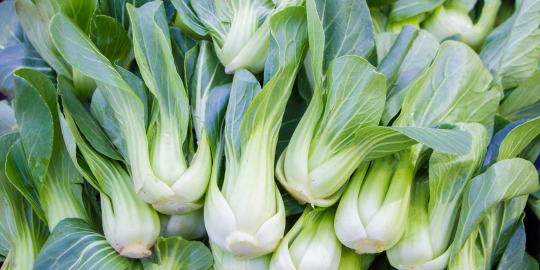
Bok choy (Chinese cabbage) is full of essential vitamins and minerals needed to support a dog’s eyesight, cardiac function, digestion, bone strength, and immunity. Sulfurophane - a compound found in bok choy and other cruciferous vegetables - has been linked to inhibiting cancer cell growth, lowering blood pressure, and activating the nuclear factor Nrf2 which prevents the development of diabetes and its complications. Bok choy’s low calorie, high fiber content also make it a good option for a snack/food topper for dogs who need to control their weight.
Preparation: Lightly steam or boil for better nutrient absorption. Cooking will also help neutralize the enzyme (myrosinase) that can decrease thyroid function. You should also chop/trim their long leaves to avoid choking hazards.
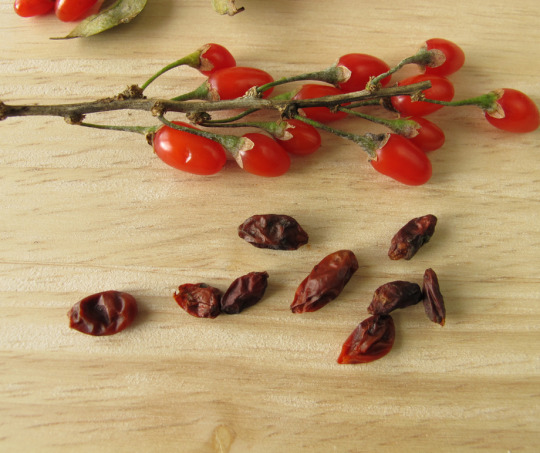
Goji berries (wolfberries) are rich in amino acids, carotenoids which support healthy vision, and polyphenols that have anti-inflammatory, anti-tumor, and cardio-protective properties. Studies on goji berry supplementation in animals have shown that it has the potential to help lower cholesterol, protect the liver by increasing hepatic antioxidant activity, as well as enhance metabolic homeostasis and prevent diabetes-induced renal inflammation.
Preparation: Remove stems if still attached and cut/mash berries. If dried, soak in water until softened to avoid passing straight through the GI tract and losing the benefits of its nutrients.
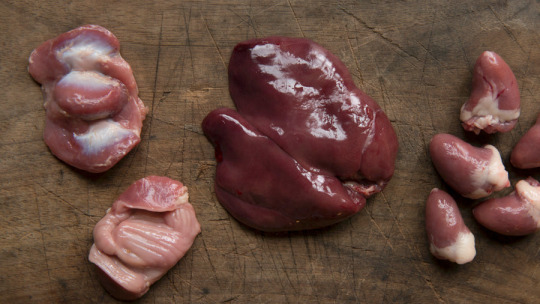
Offal refers to the internal organs and variety meats of animals that can be consumed as food (i.e. lung, heart, kidney, liver, gizzard, head, feet, etc.) The word 'offal' literally translates to "fall off", and thus, whatever falls off the skeleton during the butchering process. Offal is densely loaded with essential vitamins, minerals, proteins, and fats - so small amounts go a long way. Pet owners who use these as ingredients as part of a complete and balanced recipe should keep in mind that each organ is unique in its nutrient profile - dependent on the animal it is sourced from and how it is raised. For example, grass-fed beef may contain less fat yet more vitamin A and E than grain-fed beef, and beef liver has significantly more vitamin A and copper than chicken liver.
Preparation: Boil in water or low-sodium broth. May also be baked or dehydrated into jerky treats.
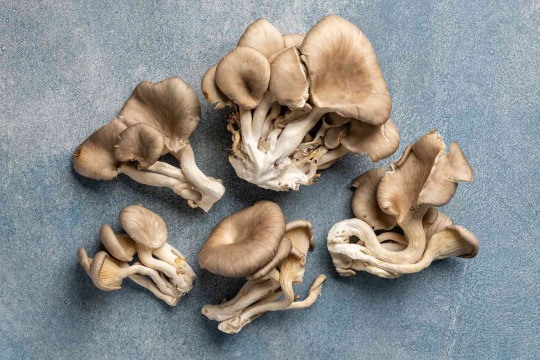
Oyster mushrooms are a good source of protein and fiber, and vitamins that support healthy digestion. They can help to increase satiety and maintain healthy body weight. Oyster mushrooms are also full of pantothenic acid which help to maintain cognitive function and healthy skin/coat. Beta-glucans derived from oyster mushrooms have also been shown to reduce inflammation and strengthen immunity.
Preparation: Lightly sauté or boil in water or low-sodium broth. Raw or dried mushrooms can be difficult for dogs to digest.
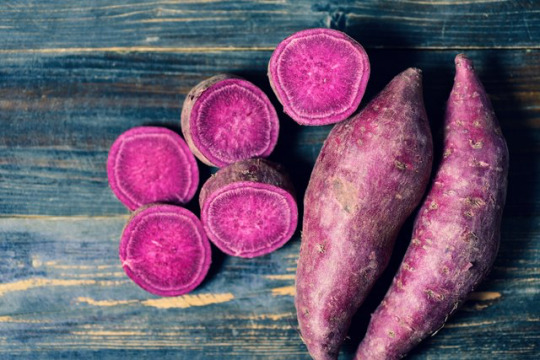
Purple sweet potato (Ube or Okinawan sweet potato) are typically found in grocery stores more commonly during the fall/winter seasons. They contain more antioxidants than regular sweet potatoes due to the anthocyanins that cause their violet hue. While all potato varieties may impact blood sugar levels because of their high carbohydrate content, purple potatoes may exert less of an effect because of their high polyphenol content that decreases the absorption of starches in the intestines. In addition, they have been linked to improving blood pressure, likely due to their high potassium content.
Preparation: Peel skin and bake until soft for better digestibility and to prevent intestinal blockages. May be boiled and drained to reduce oxalate intake for dogs with a history of bladder stones, or prone to urinary issues.
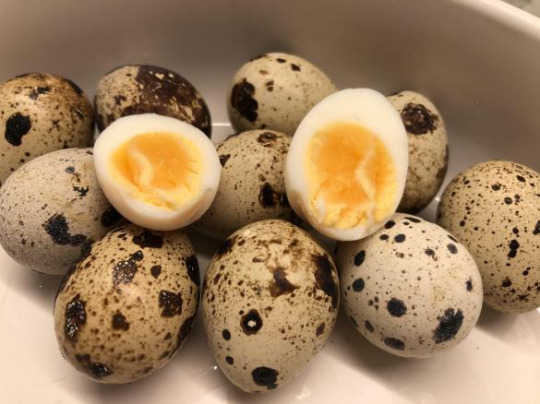
Quail eggs are small, yet packed with protein and essential fatty acids, and have a higher ratio of iron, riboflavin, and vitamin b12 than chicken eggs. It is even safe and can be beneficial to feed them with the shells included for added calcium. Quail eggs have been linked to improving bone growth/healing, reducing liver damage, and increasing energy levels. While some studies have shown evidence of quail eggs treating allergies in humans and mice, they may be less likely to trigger reactions than chicken eggs in dogs who have poultry sensitivities.
Preparation: Wash thoroughly, and handle gently as they are more fragile due to their tiny size. Cooking methods are similar to that of chicken eggs, yet require less time.
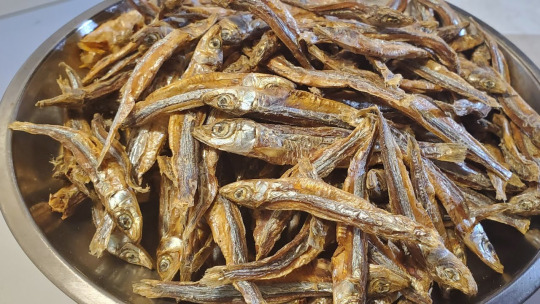
Sardines contain all the amino acids your dog needs for optimal health, making it a "complete protein". They are also notorious for being rich in omegas and coenzyme q-10, which help support heart and brain health. What sets sardines apart from other fish, too, is that they are smaller and more short-lived species than larger predator fish and may have less of a risk for mercury poisoning. Because they are so small and have soft bones, you can feed them whole to your pets.
Preparation: Bake or dehydrate. If already purchased as dried, be sure to make sure there is no added salt or seasonings. If canned, preferably those stored in water only.

Sushi rice (Japanese sticky rice) has a high proportion of starch and moisture, giving it a stickier texture when cooked. Sushi rice has virtually zero fat, yet still provides a desirable balance of nutrients while remaining gentle on a dog’s digestive tract. Its higher iron content than regular rice supports healthy blood circulation and can provide more energy to dogs who are recovering from illness. Cooling/refrigerating the rice before serving also enables more retrogradation of prebiotic fiber, helping to lower glycemic responses and maximize intestinal function.
Preparation: Rinse thoroughly and soak in water (with 1tbsp apple cider vinegar - optional) before cooking. If you don’t have a rice cooker or instant pot, boil on the stove until the water is completely absorbed. May be cooked with bone broth for added flavor. You can also use small amounts of beet root powder, turmeric, or blue spirulina to add color and nutrients.
#asian markets#pet food#dog treats#bok choy#goji berries#offal#oyster mushrooms#quail eggs#sardines#sushi rice#purple sweet potato
9 notes
·
View notes
Text
Creacher Feature Friday 10: That’s No Spoonbill, but it’s Pretty in Pink!

Or should it be called Flamingo Friday, ha ha! eyyyy 👉🥴👉
Requiring little more introduction than that, most people already perceive these as unique enough birds at face value, with their odd shapes, famously salmon-to-pink plumage, and stylish struts; indeed, these bubblegum swans have captured the hearts of many the bird enthusiast and the intrepid lawn decorator. Nonetheless, all that shimmers in the sun is not cheap plastic, and there are many layers of deeper weirdness behind the flamingo than most could imagine. Let’s see if we can take a crack at it below!
As we begin with our triple Fs (fun flamingo facts), there’s no better place to begin covering like the basics. Flamingos, of the family Phoenicopteridae, are omnivorous shorebirds which live in large social flocks, or “flamboyances”, and use their specialized beaks to filter feed algae and small organisms from the waters they do love to wade. Though we often refer to them as one sort of animal, there’s actually six total species of flamingo. Two of them can be found in Africa, and the other four call the central and southern Americas their native home.
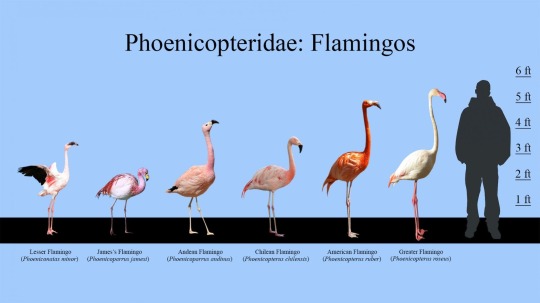
Very fittingly, you may notice that the smallest species has been dubbed the Lesser flamingo, while the largest of the family is the Greater bird, at least in height! Besides general size, the bulk of the morphological difference between these species actually goes into the specialization of their bills. Which does make sense, as their different migratory patterns and natural ranges have long fine tuned them for maximizing what they could gain of their own localized food sources.
Personally, I’d call the American Flamingo my favorite of the batch. It’s just almost about as big as the tallest ones, while standing apart as their most vibrantly colored cousins. Also known as the Caribbean flamingo, it’s also the only species actually native to the North American range as well as the Caribbean and Galápagos Islands.
For some, it’s a commonly held, intuitive misconception that flamingos find close relatives in that of the spoonbill storks or water-wading cranes, but it actually turns out that they share a much closer evolutionary line with that of grebes. What’s a grebe? They’re little and funny and they look like this

So certainly another funky bird of all time. What’s an even stranger piece of their history is the fact that these two animal types share a closer genetic lineage to that of land doves than they do to other water birds. Yeah, that’s including herons and ducks. The things we would near never guess without DNA analysis is such a head screw, sometimes. Or at least, a head scratcher.
You are what you eat
To speak again of the firey fashion sense of the marsh prowling American Flamingo, they in fact, like all Phoenicopteridae species, owe their coloration to a steady diet of aquatic organisms and plant matter they separate from the water with their teeth- well, not “teeth” per se, more like these unnerving, toothy ridges along their bills and yes, tongue.

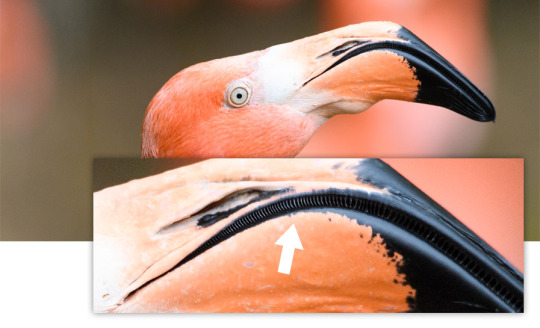
Both mouth features act together much like the bristles of a baleen whale’s own jaws to comb and trap all manner of delicious critters and algae that the birds so love to snack on. Critters and algae that just so happen to also be filthy rich in carotenoids (organic, warm-color pigments) responsible for the natural colors of MANY living things, in fact: from the pink flesh of salmon who draw from the same food web, to lobsters, to pumpkins, and especially carrots, which can even alter the color of human skin if eaten in huge excess. In other words, you can tell a lot about how a flamingo’s been eating lately from the vibrance of its feathers. Their offspring, logically, come out as an adorably blank, fresh canvas of sort.

Unfortunately, though, you may notice they also enter the world with wimpy little bills not as equipped to start scooping krill and small fish out of the shore. So, how’s the grey lil goober to eat, then? Easy, the same way pigeons and male emperor penguins feed their own young, interestingly:
🍼🦩Bird Milk~! ✨

Yeah that’s right, lactation is yet one more thing mammals can’t say they hold a true monopoly on! Okay fine, there are a few differences. In this handful of avians, milk produced to nurture hatchlings is secreted by the lining of the crop (the first major stop in the digestive tract of a bird) and then regurgitated into the younger’s waiting mouth. This is also why the formal name for the stuff is “crop milk”. Nutritionally speaking, it’s high in protein and fats, but where it really differs from mammalian secretions is that it lacks carbohydrates. Most fascinatingly, though, the process of making crop milk and the process of mammalian milk production are induced by the same hormone- prolactin. What makes this phenomenon all the weirder in flamingos is all of those aforementioned carotenoids I mentioned them eating… well, funny side effect of that seems to be that it turns their milk blood red. Big part of why this specific “creepy” photo circulated like wildfire in some places of the internet.

Brutal as it may appear on first glance, it’s actually a wholesome demonstration of two proud parents working together to grow up a healthy and well-fed baby! You may also notice that the parents themselves look practically ghostly in the image. Just another side effect of good parenting. All of that sharing food means less pretty color juice for mom and dad to spare on their own appearance.
But this all this cozy attention within the nest site marks only the first few days of a chick’s life. By the passage of the first couple weeks, the newborn has begun to waddle around and explore well beyond the spot it hatched from, eventually joining up into massive groupings (called crèches) with the rest of the colony’s wee ones.

While mom and dad will still feed their own children, the crèche itself is guarded communally by the flock’s adults, related or not. It’s a behavior also seen in some penguin species to maximize the safety of an entire community’s offspring from predation. And these communities can be massive in the wild, made up of anywhere from hundreds to even thousands of breeding flamingos. Recent study has even indicated a greater depth to their social behavior than we’ve suspected before, complete with complex inter-group dynamics, the forming of cliques between birds of similar personality, and even what resembled friendship bonds between individual flamingos that would play a social support role for one another during conflicts. As well, the colony itself sticks together tightly and acts as one unit when it comes to the most essential stuff- migrating, feeding, and most particularly in breeding. Courting and nesting rituals are synchronized among the entire flock, with individual flamingos pairing off into monogamous partnerships for the whole of the season. Typically, they will lay one egg, sometimes more rarely fostering an unrelated hatchling, as in the case of the occasional same-sex pairing (another similarity they seem to hold in common with penguins).
And what time they are given to fill with such rich social lives! In the wild, flamingos are known to live between 20 and 30 years, but under captive care they have been known to top out into their 40s-50s. On the most extreme end, we have even seen outliers such as Betty, a captive Caribbean flamingo who passed away at 67 years old, and the world record achieving Greater, who stretched out to an astounding 83 years old in an Australian zoo before being humanly euthanized. Whoever said that the brightest flame must also burn the fastest was clearly leaving these wonderful birds out of their metaphor.
And so fare thee well, flamingos. For a first, we have a relatively popular animal to hand the spotlight moment for this tidbit. Hoping that I played at least a tiny part to mystify and then immediately demystify something new about a quirky, frilly dinosaur. Until next 💞

#birds#flamingo#water birds#animal facts#bird facts#crop milk#scarlet talks about things#creacher feature fridays#long post
6 notes
·
View notes
Text

Flamingos Unveiled:
8 Fascinating Facts About These Pink Wonders!
1. **Pink Perfection**: Flamingos get their vibrant pink color from their diet, which is rich in carotenoid pigments found in algae, shrimp, and other crustaceans.
2. **Stand Tall**: Known for their long, slender legs, flamingos are one of the tallest birds in the world, with some species reaching up to 5 feet in height.
3. **Balancing Act**: Despite their height, flamingos are expert balancers. They can stand on one leg for hours at a time, conserving energy and keeping cool.
4. **Group Glamour**: Flamingos are highly social birds and often gather in large flocks that can number in the thousands. These gatherings are not just for socializing but also for safety in numbers.
5. **Courtship Dances**: When it comes to romance, flamingos have quite the show! They engage in elaborate courtship displays, including synchronized dancing and head-flagging.
6. **Egg Incubation**: Flamingos are dedicated parents. Both the male and female take turns incubating the egg on their feet, keeping it warm until it hatches.
7. **Flying Feats**: Despite their size, flamingos are strong fliers. They can reach speeds of up to 35 miles per hour and often migrate long distances in search of food and breeding grounds.
8. **Conservation Concerns**: Flamingos are facing threats from habitat loss, pollution, and climate change. Conservation efforts are crucial to protecting these elegant birds and their habitats.
These fascinating facts reveal the beauty, grace, and unique characteristics of flamingos, making them truly remarkable creatures of the avian world.
2 notes
·
View notes
Photo
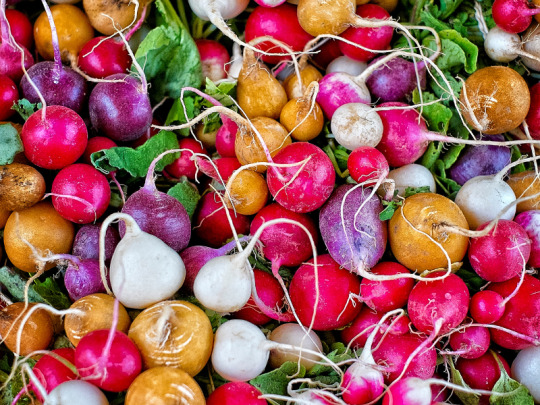
June is a joyfully colorful month in this region for several reasons! For starters, by the time June’s warmer temperatures seep into downstate New York, the growing season is entering full swing with a bright palette of fresh produce arcing through the farmstands in our markets. Plus, June is of course Pride Month – symbolized by the six-striped rainbow flag that cheerfully adorns flag poles, government buildings, store fronts and many other public spaces throughout the course of this month. Rainbows have risen to become a symbol of good fortune, positivity, diversity and inclusiveness in our popular culture, so it’s no coincidence that the phrase “eat the rainbow” is used by dieticians and other medical professionals to encourage people to put more fresh produce on their plates. In fact, consuming a variety of colorful fruits and veggies is the best way to introduce the most nutrients into your diet, without adding excessive calories. The naturally occurring pigments in these foods indicate different compounds with different properties that have been shown to provide a wide range of unique health benefits. So, to aid in the quest to taste and embrace the many seasonal colors of this month, here are some rainbow-hued items to look out for in the farmers market this weekend: Purple daikon Purple daikon radishes are at their peak during winter and spring months and are easily spotted at farmstands thanks to their bright violet skins offset by emerald leaves. This exotically hued root vegetable is native to Asia where daikon has been cultivated for thousands of years. Purple daikon is a specialty hybrid belonging to the same Brassicaceae family as the red radish. Their globular roots are oblong and cylindrical in shape with a thin tapered “tail.” The striking purple pigment is due to a type of flavonoid called anthocyanin -- the same antioxidant that gives blueberries their color, which will be entering the markets soon. If you don’t see purple daikon at the farmers market, look for watermelon radish, a round, green-white radish that reveals a dazzling hot pink interior when sliced open. Daikon radish can be enjoyed raw thanks to its crispy, crunchy texture and spicy, peppery profile that will add a splash of color and extra dimension to summer salads, grain bowls, pasta dishes and crudité platters. It can also be cooked using a variety of methods, including tossing the roots in olive oil, salt and pepper and roasting them at 375 °F for 10-15 minutes or until easily pierced with a fork. Don’t toss your leaves though! If they are still fresh and unblemished, radish greens of all kinds are delicious pan sautéed with thinly sliced garlic and olive oil then spritzed with a little freshly squeezed lemon juice. Red beets Beets grow in a rainbow of colors from gold to magenta to stunning candy cane-striped Chioggia beets. They derive their jewel-like hues from betalain, a type of natural plant pigment that has antioxidant and anti-inflammatory properties. The most common kind of beets you’ll find in the farmers market are the reddish/purple variety, but you can generally locate them in every color. Beets burst back into season this month so grab a big bunch of the spherical beauties this weekend and “get down to the beet”: * Beet salad with Goat Cheese and Balsamic * Balsamic and Fresh Thyme Roasted Beets * Easy, Homemade Pickled Beets Green peas Peas are cool weather-loving plants which means that June is a prime month for these exploratory climbers before they become sapped by the arrival of hotter temps. Peas contain a variety of minerals including magnesium, potassium and calcium and are also rich in antioxidant nutrients like vitamin C, carotenoids and flavanols. Snow, snap, and garden peas are all members of the legume family, but there are subtle differences between the three. Though they may look similar, each has a different texture and level of sweetness:
Garden (aka sweet or English) peas: Pods are firm and rounded and are shelled then discarded (toss them in your compost!) to retrieve the sweet peas inside which can be eaten raw or cooked. These are the common green peas that are sold shelled and frozen.
Snow peas: Snow peas are often used in stir-fries. The whole pod is edible and they are flat with very small peas inside. The tough “strings” along the seams are usually peeled back and removed before eating. Snow peas are mildly flavored and can be served raw or cooked.
Snap peas: A cross between snow peas and garden peas, the whole pod is eaten and has a crunchy texture and sweet flavor. Snap peas may be eaten raw or cooked. Stringless varieties are now available.
Of course, there are many more ways to shop the rainbow at the farmers market this week: orange carrots, canary yellow oyster mushrooms, blue potatoes, carmine red strawberries and the list goes on! And, if you want to eat your way to some extra credit, pick up a bunch of beautiful rainbow chard! The stalks come in an array of bright hues and pretty pastels from white, yellow, red, purple, pink and striped topped with vibrant, leafy greens.
3 notes
·
View notes
Text
The Power of Vitamin A: A Guide to Radiant Health
Hey there, health enthusiasts! Today, let's dive into the wonderful world of Vitamin A and explore the remarkable benefits this essential nutrient brings to our well-being. Get ready to unlock the secrets of this beauty-boosting, immune-strengthening vitamin!
🌟 The Basics of Vitamin A 🌟
Vitamin A is a fat-soluble vitamin that plays a crucial role in maintaining the health of our vision, immune system, and skin. It exists in two primary forms: retinol (found in animal-based sources) and carotenoids (found in plant-based sources).
👀 Nurturing Our Vision 👀
Remember those carrots your parents told you to eat to maintain good eyesight? Well, they weren't entirely wrong! Vitamin A is essential for proper eye health and optimal vision. It helps form a pigment called rhodopsin, which is crucial for seeing in low light conditions. Regular intake of Vitamin A can also protect against age-related macular degeneration (AMD) and dry eye syndrome.
💪 Boosting Our Immune System 💪
A robust immune system is our body's defense against illnesses and infections. Vitamin A plays a vital role in supporting the immune system by regulating the production and function of immune cells. It helps strengthen the skin and mucous membranes, acting as a barrier against pathogens. By enhancing our immune response, Vitamin A aids in preventing and fighting off infections, such as respiratory infections and gastrointestinal diseases.
✨ Skin Health and Radiance ✨
Want that natural glow and healthy skin? Look no further than Vitamin A! This vitamin supports skin health by promoting cell turnover and regulating oil production. It helps combat common skin issues like acne, dryness, and uneven skin tone. Vitamin A also aids in the production of collagen, a protein that maintains skin's elasticity, reducing the appearance of fine lines and wrinkles. So, say hello to smoother, more youthful-looking skin with Vitamin A as your ally!
🍅 Embrace the Sources of Vitamin A 🍅
To reap the benefits of Vitamin A, it's essential to incorporate food sources rich in this nutrient into your diet. Here are some excellent sources:
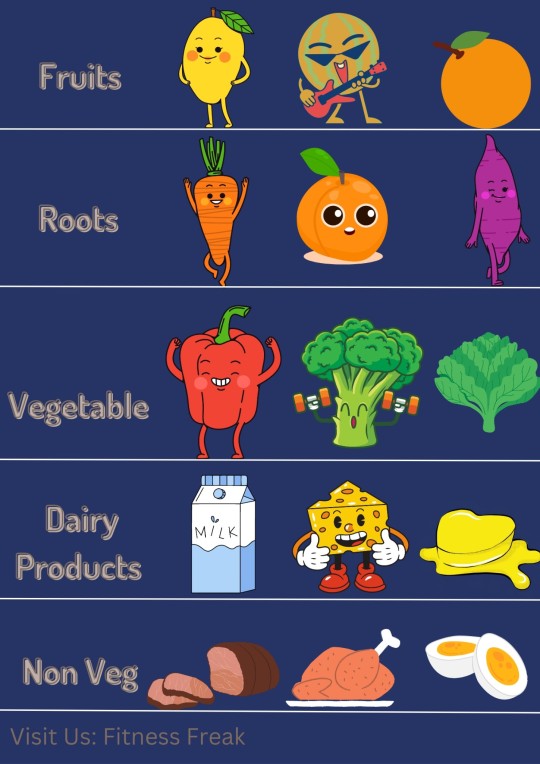
Animal-Based Sources:
Liver (beef, chicken, or fish)
Eggs
Dairy products (milk, cheese, yogurt)
Plant-Based Sources:
Carrots
Sweet potatoes
Spinach
Kale
Red bell peppers
Apricots
Mangoes
Remember, a well-balanced diet that includes a variety of fruits, vegetables, and animal products can help ensure you're getting an adequate intake of this crucial vitamin.
🌈 The Power of Moderation 🌈
While Vitamin A is vital for our health, it's essential to consume it in moderation. Excessive intake of preformed Vitamin A from animal sources or supplements can lead to toxicity, causing adverse effects on our health. It's always best to consult a healthcare professional or a registered dietitian to determine the right dosage and ensure you're meeting your specific needs.
💊 Supplements: When to Consider? 💊
Supplements can be useful for individuals with specific deficiencies or dietary restrictions. If you're unable to meet your Vitamin A requirements through diet alone, supplements might be a viable option. However, it's crucial to consult a healthcare professional before starting any supplements to ensure they're suitable for you.
✨ Embrace the Beauty and Health Benefits of Vitamin A! ✨
Vitamin A is an incredible nutrient that goes beyond its reputation for supporting vision. By nourishing our skin, boosting our immune system, and promoting overall well-being, Vitamin
3 notes
·
View notes
Text
i hate to break it to ppl, but this is not what any rosefinch species actually looks like :( however, there are in fact some absolutely gorgeous rosefinches out there!! like the red-mantled rosefinch:

or the blyth's rosefinch:

or the pallas's rosefinch:

or the incredibly aptly-named great rosefinch!!

and ofc, dont forget the vinaceous rosefinch:

one of my favourite birb facts is that birds can't created carotenoid, the chemical that gives both animals and plants their signature yellow/orange/red/pink hue, they can only get it from what they eat. so if you took any one of these finches and deprived it of any carotenoid-rich food, they'd turn brown again! its an easy way to tell who's eating the best--just look for the most vibrantly-coloured one! that's what females do when choosing a mate, anyway xD

#birbs#sorry fam my bird-fact-dispensation reflex was triggered by seeing incorrect bird facts on my dash sdlkfjsdf#not that i ever really need a reason to dispense bird facts
21K notes
·
View notes
Text
Boost Your Vision: 6 Ways to Add More Vitamin A to Your Diet

Every year, millions of people suffer from vision problems, which can severely impact their quality of life. Vitamin A is essential for eye health, helping to prevent severe issues like night blindness and dry eyes. This article outlines six simple ways to increase your vitamin A intake, enhancing your eyesight effectively.
Understanding Vitamin A and Eye Health
Vitamin A's Role in Vision
Vitamin A is crucial for creating rhodopsin, a pigment in the retina that helps us see in low light. A deficiency can lead to night blindness, dry eyes, and various other vision problems. Globally, it's estimated that 250 million preschoolers suffer from vitamin A deficiency, making it a pressing health concern.
Types of Vitamin A
Vitamin A comes in two forms: retinoids and carotenoids. Retinoids are preformed vitamin A, found in animal products. Carotenoids are provitamin A and can be converted by the body into vitamin A. Foods rich in retinoids include fish and dairy, while carrots, sweet potatoes, and leafy greens are good sources of carotenoids.
Incorporating Vitamin A-Rich Foods into Your Diet
Leafy Greens
Leafy greens like spinach, kale, and collard greens are packed with vitamin A. You can add these nutritious greens to:
Smoothies: Blend with fruits for a refreshing drink.
Salads: Mix with various toppings for a hearty dish.
Aim for at least one cup of cooked greens or two cups of raw greens daily.
Orange and Yellow Vegetables
Carrots, sweet potatoes, and pumpkin are excellent sources of beta-carotene, which the body turns into vitamin A. Try these ideas:
Roasted Carrots: Toss with olive oil and seasonings before baking.
Sweet Potato Mash: Create a creamy side dish perfect for any meal.
Incorporate at least one serving of orange or yellow vegetables into your meals each day.
Fruits Packed with Vitamin A
Apricots and Mangoes
Apricots and mangoes are great sources of vitamin A. Enjoy them by:
Fresh: Add slices to your breakfast or snack.
Dried: Mix with nuts for a nutritious trail mix.
Try including one serving of these fruits in your daily diet.
Cantaloupe and Other Options
Cantaloupe offers a sweet way to get your vitamin A. Other options include papaya and guava. You can:
Make a Fruit Salad: Combine various fruits for a refreshing dish.
Smoothies: Blend with yogurt or almond milk for a nutritious beverage.
Aim for two servings of these fruits each day.
Animal Sources of Vitamin A
Fatty Fish
Fatty fish like salmon and tuna are rich in preformed vitamin A and omega-3 fatty acids, promoting good eye health. For serving recommendations, try:
Grilled Salmon: Enjoy it with roasted vegetables.
Tuna Salad: Mix with veggies for a nutritious lunch.
Incorporate fatty fish into your diet at least twice a week.
Dairy and Eggs
Dairy products and eggs are also high in vitamin A. Consider:
Yogurt: Add to smoothies or enjoy with fruits.
Scrambled Eggs: A protein-packed breakfast option.
Aim for two servings of these animal sources each day.
Supplements: When to Consider Them
Vitamin A Supplements
If your diet lacks sufficient vitamin A, supplements might help. However, always consult a healthcare provider before starting any new supplement. Understand that water-soluble vitamins are different from fat-soluble ones like vitamin A, which can accumulate in the body.
Other Important Nutrients for Eye Health
Consider including lutein, zeaxanthin, and zinc in your diet. These nutrients work synergistically with vitamin A, enhancing eye health. Foods like leafy greens, peas, and nuts can aid in this effort.
Lifestyle Factors for Eye Health
Regular Eye Exams
Regular eye check-ups can help catch issues early. Depending on your age and risk factors, consider visiting your eye doctor every one to two years. An ophthalmologist emphasizes, “Early detection is key to maintaining good vision.”
Protecting Your Eyes from the Sun
UV rays can harm your eyes, increasing the risk of conditions like cataracts. Protect your eyes by wearing sunglasses with UV protection and hats when outdoors. Awareness of sun exposure is essential for preventing age-related macular degeneration.
Conclusion
Increasing your vitamin A intake is vital for maintaining good eye health. By focusing on these six strategies—eating vitamin-rich foods, considering supplements when necessary, and adopting healthy lifestyle habits—you can significantly improve your eyesight. Consult healthcare professionals regarding your specific needs for tailored advice. Your eyes will thank you.
0 notes
Text
5 Surprising Benefits of Adding Krill Oil Supplements to Your Routine
5 Surprising Benefits of Adding Krill Oil Supplements to Your Routine
While omega-3s might be the first thing that comes to mind when thinking about heart health, what about krill oil? For many years, fish oil dominated the marketplace for obtaining omega-3s but krill oil - especially that from Antarctic krill - is quickly replacing it.
Krill oil harbors some spectacular levels of omega-3s along with a few pretty surprising benefits.
Let's take a closer look at why adding krill oil supplements to your regimen may be a wise move.
1. Promotes Healthy Heart the Natural Way
If you are familiar with omega-3 for heart health, then you would know that these essential fatty acids support the management of cholesterol and triglyceride levels. Krill oil is, however, even better for heart health than other traditional fish oil. Why? That's because krill oil is more bioavailable to your body due to its unique structure. This means you might not need as much to see the same heart-healthy benefits. If you're looking for a way to keep your heart in top shape, krill oil might just be your secret weapon.
2. Krill oil Aids in Lowering Triglycerides
High levels of triglycerides increase your risk of heart disease; however, using krill oil for triglycerides may help you get better levels. The omega-3s in krill oil supplements have been shown to be more effective in reducing triglycerides than those in fish oil. If you want to naturally drop your triglyceride numbers, this is one supplement that really delivers.
3. Krill Oil Helps Fight Inflammation
Another critical driver towards heart disease is inflammation. Krill oil has this one covered as well. These marine-dwelling creatures are rich in omega-3s and packed with astaxanthin, an antioxidant that fights oxidative stress and inflammation. This makes Antarctic krill oil a great way to protect not just your heart, but your entire body from the damaging effects of chronic inflammation. So, if you need a supplement that will do something more than just protecting your heart, krill oil is a great all-round option.
4. Krill oil keeps Your Brain Sharp
Apart from heart health, omega-3s play a crucial role for brain functions. Krill oil supports cognitive function, improves memory, and even helps with mood. Because krill oil is easier absorbed by the body, it's a great source for mental acuity. Adding this to your routine allows your brain to receive the support it needs to maintain sharpness and focus through life's aging processes.
5. Krill oil helps in Radiant Healthy Skin
Who would not want radiant, healthy-looking skin? Krill oil benefits skin health as Omega-3 in krill oil does great in hydrating the skin and reducing inflammation. Furthermore, the astaxanthin found in Antarctic krill oil acts as an antioxidant that reduces signs of aging and protects your skin from sun damage. Krill oil is therefore the right supplement for you to include in your skincare to have smoother and healthier-looking skin.
Why Antarctic Krill Oil?
Not all krill oil is the same. Krill oil comes from the Antarctic krill, which are situated down the food chain. This lessens the chance of containing dangerous toxins such as mercury. As a result, it would be safer and cleaner for those who want to improve their health without risking impurities. It is more environmentally friendly and good for the planet, too.
Is Krill Oil Better Than Fish Oil?
The battle for supremacy is intense between fish oil vs krill oil, and while each has its own perks, krill oil is slightly ahead in some significant areas:
Better Absorption:
The unique structure of krill oil allows for faster absorption and utilization in the body than fish oil.
Purity:
Antarctic krill builds far fewer toxins relative to the species used in fish oil.
Antioxidant Power:
Krill oil contains a carotenoid called astaxanthin, which does not exist in fish oil. This makes the krill oil superior in health.
Krill oil therefore is the better option when you want improved absorption together with added antioxidant protection.
So, if you have decided to supplement your diet with something, then krill oil must top the list. It is rich in omega-3s and full of health benefits, like a healthy heart, firm skin, and a healthy brain, at the peak of their course. Whether the situation calls for controlling triglycerides or lowering the inflammation level, or you just need something more to keep up your level of antioxidant intake, krill oil will surely come in handy for you.
#Benefits of krill oil#Omega-3 for heart#Krill oil supplements#Krill oil for triglycerides#omega-3 supplements for heart health#Krill oil#Best fish oil supplement#Antarctic krill oil#Antarctic krill#Antarctic krill oil benefits#krill oil for skin#krill oil for skin health#krill oil for brain health#krill oil versus fish oil
0 notes